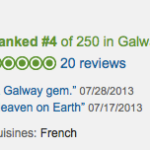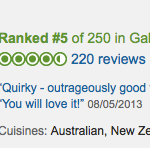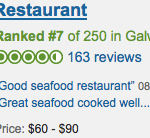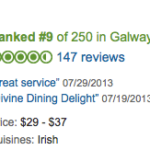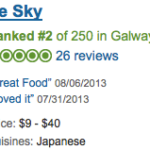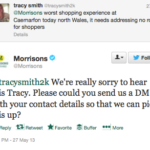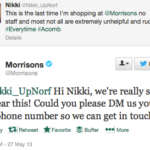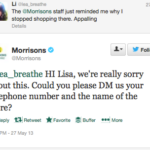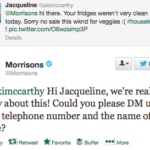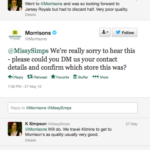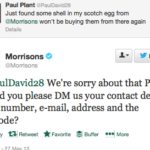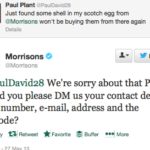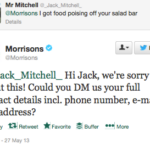
This post has been 20+ years in the making.
Earlier today, I watched a Ted talk by Alain de Botton and one of the points he was making was that Western civilization has become more individualistic and this might have something to do with how we view the attribution and responsibility for ‘success’ and ‘failure’. Combining what Alain was exploring, in part, with my own long running musings yielded something profound for me. That is what I want to share with you.
FYI: This is not about religion. It is about the beliefs that we each operate on when we are on the edge – about to fall or to fly. When I mention Christians or Muslims I simply do so to describe the fundamental belief – not the structures of their religion. So chillax with the fatwas and threats of Hellish damnation.
Life is hard

Life is hard, it has always been and probably always will be. Hardships can be big and all-encompassing – something we face collectively like a meteor striking the Earth or a global epidemic. More typically, there are the personal hardships that we face as individuals or in small groups – friends, families etc.
Hardship could come from natural disasters like earthquakes and tsunamis that bring hardship swiftly and on a mass scale. There are the hardships that we do to ourselves – wars, genocide, persecution of the different. They might be hardships as a result of the way we collectively choose to live – economic poverty, hunger, unemployment and so on. They also include personal hardships like depression , low self esteem and so on.
One of life’s primary sources of hardship is uncertainty. We don’t know what will happen and that scares us.
Whilst hardship is perpetual, it is also ever-changing. In the middle ages in the western world, ‘hard’ was plague and sanitation, peonage and deeply laborious work.
As we make advancements in medicine and technology, ‘hard’ again is redefined – at least for some of the world. We hear things like ‘first world problems’ – my phone battery only lasts a few hours, I have full fat milk in my latte when I asked for soya!
Hardships are relative in time and between people. Some things that were hard – like infant mortality in 1800s are much less a problem in the 2000s. Yet where you might consider a chipped nail to be ‘devastating’, another person’s ‘devastating’ is losing both their legs.
As we advance ways to make life easier, we seem to create new ways for life to be hard.
Life is wonderful

Life is also wonderful and inexplicable.
Even when we can explain what we previously could not, the wonder remains and is even more wondrous. The joy and wonder of life also operates across the grandest scales – like the endlessness of Space – to the smallest – like an ant being able to lift several times its own body weight. From the chaotic formation of new islands from volcanic activity in the Pacific to how, in an instant, smelling your favorite food from your childhood can transform sadness into delight.
The wonders of our natural world, of Space and the diversity all around us are truly breathtaking. How do we explain them? Our advances in knowledge and technology help us not only to seek answers to old questions, they help us discover new things to be wondrous and curious about. Yet more remains inexplicable.
Our timeless need
So in the middle of this mash-up of hardship and wonder is Homo sapiens – the human. However you believe we got here is irrelevant at this point. We are here.
The human is a sentient being. We are capable of perceiving and feeling things around us. We are generally well adapted to converting those perceptions into emotions and reacting accordingly.
Our ability to feel may also be the single biggest contributor to our timeless need.
Life’s hardships and wonder can generate such powerful emotions in each of us. We act on those emotions – we kiss, we kill , we flee , we fight and we sometimes do nothing. Each action generating more to be perceived and more emotions generated in us and in others. These emotions can be so powerful they could be life changing or life ending.
They can be so overwhelming that the person feels they cannot contain it, it is too much and it is greater than them. For example, imagine your entire family being wiped out by volcanic eruption, suddenly and violently. How do you cope with that? Or watching your loved ones systematically cataloged and slaughtered by other people who believe you not to be human. Even imagining it is almost impossible.
I remember seeing each of my children being born and the feeling is a little overwhelming.
I can explain how a child is conceived, how they grow in the womb of the mother and how gestation works. I understand the chemical reactions that occur to help that baby emerge into the world. Yet none of that prepared me for the feeling of being overpowered by love and humility as this little life was placed in my arms.
What would happen if, at that moment, that life was denied – how can any new parent even comprehend that?
There are things that are bigger than our ability to emotionally process them. Our timeless need is that, whether through hardship or wondrous joy, life provides things that we are powerless to comprehend but need to make some sense of, lest the emotion destroys us.
And this is where God comes in.
Explaining God
Before I go any further and to help us both understand what I am talking about, it is useful for me to define what the word ‘God’ means for me:
God is that non-human power that transcends everything around me and who sees all, knows all that ever was and ever will be. This power is also invested with justice against all that I consider unjust but am powerless to bring to account
And what are the properties of God?
God is all good because there is inexplicable goodness in life.
God is just and all-powerful because there is such senseless injustice in the world that we are emotionally overwhelmed by and yet are individually powerless to make ‘right’.
God is all-knowing because life is uncertain and implicitly we know there are things we cannot yet know – we just don’t know what we don’t know.
God is kind because there is unbelievable cruelty in life and it happens to us and the people we love.
God is fair because there is such inequality in life. There are natural variations in people’s circumstances that result in hardships. There the inequalities that result in the way we choose to live – hunger and poverty in the midst of such financial wealth. The ethnic and social caste systems that seek to institutionalize these variations.
In some religions, God is entirely the positive and to explain the negative, another deity is required – like Satan in Christianity. In others, both hardships and wonders are the faces of the same power.
God provides a place to park your powerlessness

My friends who actively practice their religion – Christians, Muslims, Buddhists etc simultaneously amaze and inspire me with their faith.
They tell me their belief provides a framework to put all of the emotions they cannot deal with in context. The wonder of life is God’s doing and the hardships – wherever they come from – are a test to help them grow as people and closer to God.
God is both the giver (birth). Infertility is a test and in any case it is God’s will. God is the taker (death) – so even as you grieve it might help to think there is a higher ,albeit unknown, purpose to why you have lost your loved one.
My Buddhist friends tell me that to be closer to God we should disassociate from those perceptions – a sort of emotional protection. Having the discipline to detach what you perceive from the emotion that you generate from it is the road to Godliness. Developing that discipline is the lifelong practice that we must commit to.
Hinduism diversifies things a little – there is one God that is manifested in several other deities that address particular aspects of powerlessness. Vishnu is the protector and the preserver who is our source of sustenance to endure. Shiva is the God of annihilation , the destroyer and the enforcer of justice and more than 330 million other deities serve as a means of making sense of the various permutations of collective and personal powerlessness. Hinduism really extends the specialisation of deity along the same lines of Greek and Roman classic beliefs.
Regardless of how many Gods we have – the purpose is pretty much the same, make sense of what is beyond our personal comprehension.
Yet what happens when we do not have a belief in God that we operate on?
Surviving in a Godless world

This is what really triggered it for me in Alain de Botton’s TED talk. Botton asserts that in Western societies, we have removed God from the core of our beliefs and focused more on individual and collective responsibility. We rely on Science to offer the answers more than ascribing the unknown to God.
We seek evidence and not simply invest in faith. The outcomes of personal success or failure are attributed to the individual more than the plan of a God.
This is new or at least it has been so long since it was the norm that is might as well be new. Not even communism had this effect. In communism the collective had the answers, personal ambition and therefore personal success or failure were much less relevant. In theory anyway.
Yet the timeless needs still remain. The hardships are still there, so are the joys and the wonders. In the absence of God, who are we supposed to pin our powerlessness on?
Where we cannot rationally take responsibility for something – like the death of a parent from a terminal disease, we simply absorb it.
We put it in a box and bury it. Some might become philosophical about it – another mechanism to try to make sense of powerlessness – but ultimately the emotion is locked away. Ask anyone who has lost a beloved parent to go back to that box and explore its contents – especially without a framework of God – and observe how raw and powerful the emotion is, triggered by the memory of their loss.
Sometimes absorbing it causes huge emotional problems – breakdowns, deep depression – that lead to ever more self-destructive behavior.
What of the things that we can somehow see our responsibility in? Like being the survivor of a terrible fatal accident or accidentally causing the death of child?
Where a God framework might serve to blunt that emotion by saying “you are human, you can fail, it’s God’s will”, a godless person has no such shelter. The full perception is there. Most people can rationalize it and remove some of the potency of the sense of responsibility and emotions associated with. Others cannot and they get depressed, might seek self harm maybe even suicide. Could this help explain the rising incidents of depression in Western societies?
My friend – a Catholic priest – tells me that when he is in the confessional, it is fundamentally about helping the other person forgive themselves so they can move beyond the powerlessness.
Fundamentally, I believe Man created the concept of God. We invested the antidotes for all we are powerless against into that concept – kindness, forgiveness , justice, certainty, strength, immortality and eternal well-being.
What might happen if we took these virtues back and invested them in ourselves? What might happen if we were each kinder to ourselves, were more forgiving of ourselves and others or that we were able to eradicate the causes of avoidable powerlessness?
Why I wrote this
I wrote this because we are complex beings living in a complex world. We are making it more complex by our actions. I wrote this because I want us to make things simpler for ourselves so we can focus more of our abilities on addressing the complexities around us.
I wrote this because being in the uncharted territory of Godlessness is not the same as being lost and I want us to seize this opportunity to be kinder and more humane to each other. To evolve to become closer and more connected as human beings. I believe we can do it – we don’t need God, we need the virtues of God.
I wrote this because I want us to begin to focus more on tackling the causes of powerlessness and not simply fight the often explosive consequences of it – like religious radicalism that ends up in massacre and mayhem or mass revolts that trigger further repression.
I wrote this because whilst religion provides mechanisms of human connections to each other – fellowship and a sense of community – and a powerful sense of personal connection to God, it also invites other behaviors that promote new hardships. Judgement and condemnation of others and the easy abuse of position by the administrators of that religion. I want the good bits and frankly, none of the other stuff.
I wrote this because the institutionalization of God – religion – has long caused and continues to cause more conflict than it resolves. We are fighting about whose hose is better even as the fire threatens to burn us all. I want the divisions to stop. I want us to see that we have fundamentally the same needs, challenged by the same forces and we are unbelievably more powerful together than as we fight these ineffective ideological battle.
Finally I wrote this because I want the next young Mike Sutton who is wandering the internet confused about feeling outside the mainstream and dissatisfied with religions he sampled and the beliefs he explored – including atheism – to have something to read that offers an understandable and reasonable account of a different, kinder, more empowering and more human perspective.


